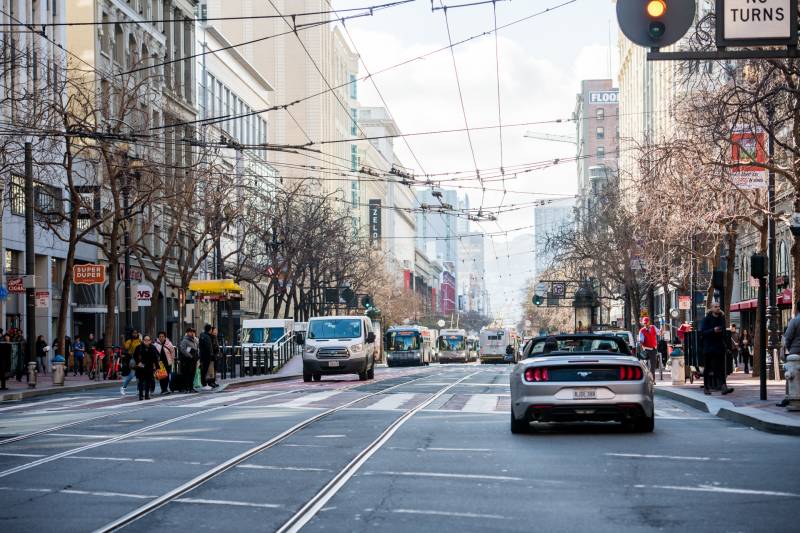Amid lasting grief and shock after a March 16 vehicle crash in which a driver killed a mother, father and their two young children outside Muni’s West Portal station, San Francisco Mayor London Breed announced a series of initiatives meant to prevent a recurrence of such a tragedy and to spur progress in the city’s 10-year-old Vision Zero campaign to end traffic fatalities.
The measures the mayor outlined Thursday at a midday conference outside City Hall include reducing the number of intersections where right turns are permitted on red lights, beefing up police enforcement of the most dangerous traffic infractions, and expediting the San Francisco Municipal Transportation Agency’s completion of urgent “Quick Build” safety projects.
Beyond those immediate actions and others, Breed also noted that the city’s street infrastructure is badly outdated and needs “a complete overhaul, period” to make it safe for all users.

